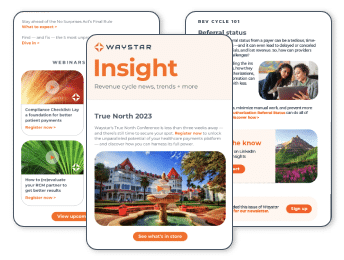Prior authorization is used as a tool to ensure high quality of care while controlling healthcare spending. However, the process itself is extremely labor-intensive and has become a significant source of administrative burden for providers and health plans alike, with 40% of providers listing prior authorization as their biggest pain point when prescribing medication.
According to CAQH, administrative prior authorization processes have been estimated to contribute as much as $25 billion annually to the cost of healthcare in the United States. And as prior authorizations grow more complex, struggling to track all those requirements in binders and spreadsheets is only going to create exponential costs.
Do more with your resources
From 2011-2013, the percentage of medical claims referencing prior authorization increased 2.3% on average, with some payers doubling and tripling the number of care events that require authorization.
A survey by the American Medical Association found that 75% of participants believed prior authorizations could lead to treatment abandonment. It also found that on average, practices complete 31 prior auths per physician per week, adding up to nearly 15 hours of administrative time. Now add in the extra time it takes for patients to receive care as the result of prior authorization complications, and you have a serious problem.
The same study found that slightly more than 90% of providers report treatment delays associated with slow prior auth processes, with 58% stating it takes usually one to five business days to receive a response.
The mounting costs, delays in care, and wasted staff time all add up to a problem providers are struggling to deal with. Thankfully, prior authorization automation is powering new cost-effective solutions that support intuitive workflows, prevent errors, and ease the burden of processing denials.
For instance, an end-to-end authorization software suite can pull necessary clinical data directly from your organization’s EHR, create a medical review within your case management system, and send notification of the patient’s appropriate care determination back to the EHR. It also determines if an authorization is required and whether medical necessity is needed. This expedites the medical review process and frees staff to focus on patient care and complex, high-risk accounts.
But not all prior authorization automation vendors are created equal. Here’s an overview of what your ideal vendor should look like.
Three content areas to automate in the prior authorization process
1. Medical Necessity
Your software must determine whether an authorization is required right away. Meaning your vendor should cover as many commercial payers as possible and be able to easily upload content to your EHR in order to discover NCD/LCD medical necessity requirements. Using rules to determine whether you should use standard electronic transactions or payer website data to facilitate cost-effective information exchange between providers and payers is crucial.
2. Initiation
According to a study, the average physician practice devotes 13.1 hours of nursing time and 6.3 hours of clerical time to the authorization. With automation, that time can be significantly reduced.
Finding a software solution that can automatically initiate and obtain authorization for scheduled services, submit an inquiry and confirm prior authorization approval without human intervention needs to be part of your authorization automation strategy.
3. Notification
Healthcare organizations are required to notify insurance payers in a timely manner when a new patient is admitted. Without automation, the probability of missing the one to two-day notification window for certain payers to process an authorization record skyrockets.
Automating admission notifications eliminates the potential to miss that window while also giving you access to payers that may only take notifications via a web portal.
A quick recap
Manually requesting a single authorization takes at least 15-20 minutes each, requiring a staff member to visit the payer’s website and then copy and paste a significant amount of non-clinical and clinical patient data into various fields.
For a large multi-facility IDN with high patient volumes, the process can require delegating hundreds of employees or writing significant outsourcing checks even if only 10% of accounts require an authorization.
Your authorization solution should offer you the ability to automate the menial tasks of logging into payer websites and dialing phone calls. And it should constantly check and recheck those ever-changing prior authorization rules and requirements.
Prior authorization automation allows you to increase the amount of authorizations completed per hour, with far fewer staff. It can also help you focus your staff on complex, high-volume accounts and engagement with patients, making 100 employees feel like 1K.
Want to learn more?
Check out how Waystar’s Authorization software helps providers increase productivity and reduce denials.


